Welcome to the fascinating world of snake-mimicking caterpillars, nature's tiny masters of disguise! These incredible creatures have evolved to mimic snakes in both appearance and behavior, giving them a unique advantage in surviving predators. From fake eyes to horn-like appendages, these caterpillars are all about trickery, proving that in nature, looks really can be deceiving. Let’s dive deep into this world and explore eight amazing caterpillars that have mastered the art of looking like snakes.
Snake-mimicking caterpillars are a marvel of evolution. They employ a combination of visual mimicry, behavioral adaptations, and even chemical deterrents to fool predators. Most rely on features like large "eye spots" or snake-like head shapes, which they display when threatened. Others go a step further, puffing up their bodies or mimicking a striking snake's movement. This adaptation works because predators like birds or small mammals are naturally wary of snakes, which are often venomous or aggressive. For a slow-moving caterpillar, looking like a predator instead of prey is a life-saving strategy.
The Red Helen Swallowtail caterpillar (Papilio helenus) is a green wonder of the forests of India and Southeast Asia. In its larval stage, it looks just like a green snake with a scaly texture and eyespots.
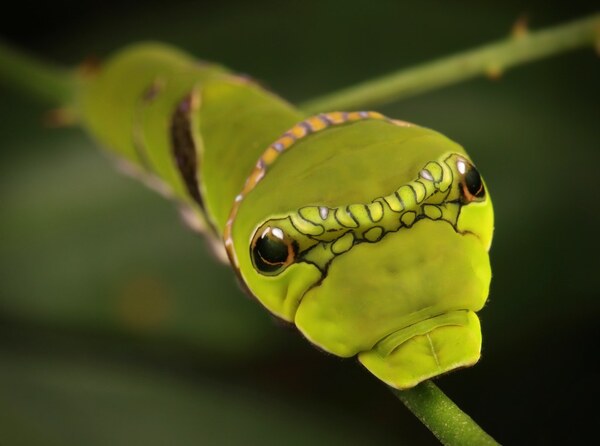
When disturbed, this caterpillar reveals its secret weapon—a two-pronged organ called an osmeterium. This structure releases a foul-smelling chemical, enough to send predators packing. Once matured, it transforms into a striking butterfly with black wings adorned with white and red accents, a stark contrast to its snake-like beginnings.
The Spicebush Swallowtail caterpillar (Papilio troilus) takes mimicry to the next level with its bold "snake eyes." Found in the eastern United States, this caterpillar evolves through several stages, each more dramatic than the last.
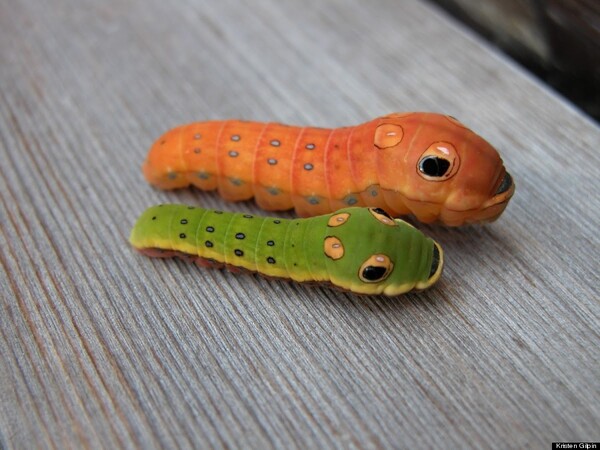
Its final larval stage features bright yellow or orange coloring and large eye spots that resemble a snake's intimidating glare. If a bird or lizard gets too close, it even raises its front end like a striking snake. After pupation, it emerges as a black butterfly with shimmering blue or green spots.
Found across South and Southeast Asia, China, and Japan, the Great Orange Tip caterpillar (Hebomoia glaucippe) is another snake-like marvel. Its vivid green body is lined with snake-scale-like markings, including a red stripe and orange-blue details near its "head."
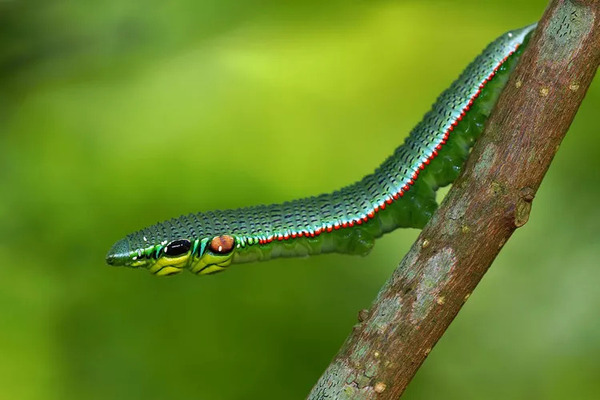
The caterpillar doesn’t stop at looking like a snake—it behaves like one, lifting its head and "striking" at threats. When it becomes a butterfly, it sheds its snake guise for a pristine white body with vibrant orange and black wing tips, making it a completely different kind of visual spectacle.
The Jade Hawk-Moth caterpillar (Daphnis nerii) hails from tropical regions like Sri Lanka, India, and Southeast Asia. In its larval stage, this caterpillar is a vision of green with tiny yellow specks and a reddish band that gives it a subtle, snake-like vibe.
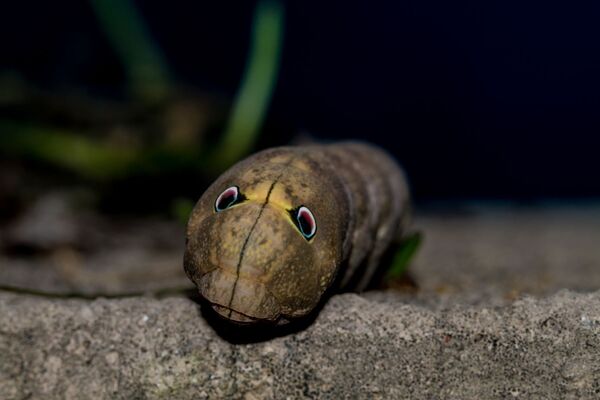
Though its mimicry isn’t as bold as others, this caterpillar compensates with sheer beauty. As an adult, it becomes the stunning Oleander Hawk-Moth, boasting olive green, brown, and red wings with intricate patterns.
The Elephant Hawk-Moth caterpillar (Deilephila elpenor) is as weird as its name suggests. Found in the UK and parts of the U.S., this caterpillar looks like a snake with a long, trunk-like body and bold eye spots.
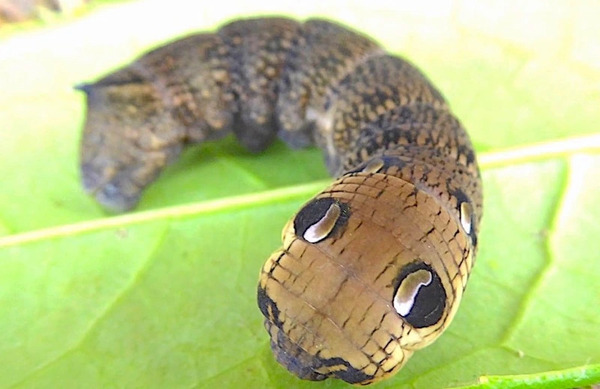
Its primary defense mechanism is to puff up its body, making the eye spots appear even larger. Once it matures into a moth, it trades its earthy tones for vibrant shades of gold and pink, a feast for the eyes at night as it flits around honeysuckle flowers.
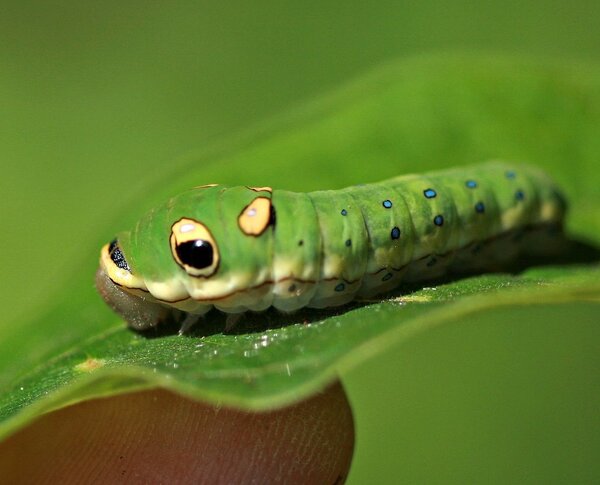
The Eastern Tiger Swallowtail caterpillar (Papilio glaucus) is another impressive mimic. Found in eastern North America, this bright green caterpillar sports prominent eye spots and even a "fake mouth," making it look like a snake ready to bite.
When not mimicking snakes, the caterpillar enjoys munching on birch, wild cherry, and magnolia leaves. After transforming, it becomes a breathtaking butterfly with yellow wings and bold black tiger stripes, a true icon of beauty in the butterfly world.
The Silver-Spotted Skipper caterpillar (Epargyreus clarus) might not be as dramatic in its mimicry as others, but it’s getting there! Found throughout the U.S. and southern Canada, this yellow-bodied caterpillar features big orange eye spots and reddish-brown markings that hint at its snake-like aspirations.
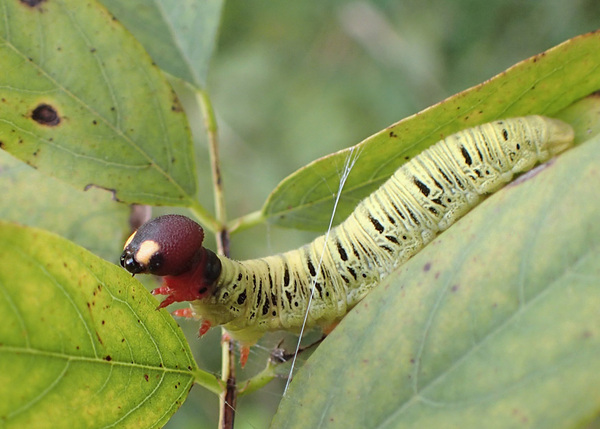
As an adult, the silver-spotted skipper butterfly sports subtle brown wings with a distinct white patch, a modest yet charming transformation from its larval phase.
The Sphynx Moth caterpillar (Hemeroplanes triptolemus) from the Amazon rainforest is perhaps the most convincing snake mimic. When threatened, this caterpillar expands its body to expose a pattern resembling a snake’s head, complete with glossy "eyes" that even reflect light!
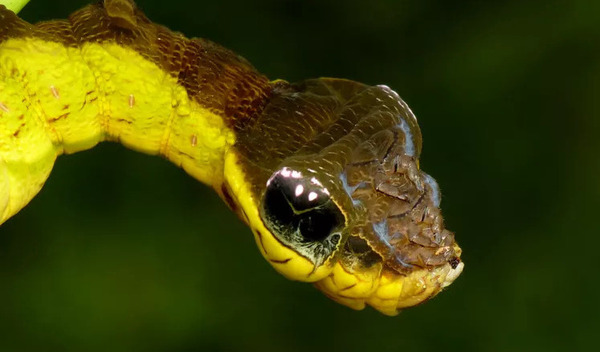
To top it off, it performs a striking motion that makes predators think twice. Once it completes its metamorphosis, it becomes a moth, blending into its surroundings with muted brown and gray wings.
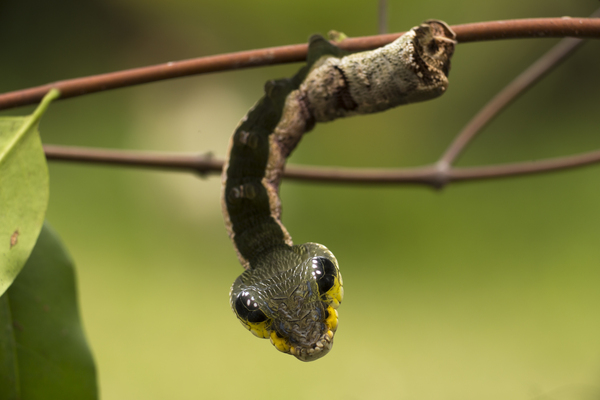
Snake mimicry isn’t just about appearances—it’s about survival. In ecosystems where snakes are common predators, animals that mimic their form gain an evolutionary advantage. Birds, small mammals, and even other insects learn to avoid anything that resembles a snake, giving these caterpillars a chance to thrive.
These caterpillars remind us of nature’s creativity and adaptability. From their snake-like disguises to their stunning transformations into butterflies or moths, they represent the incredible diversity of life on Earth.
Next time you see a caterpillar, take a closer look—you might just find a snake in disguise!
animal tags: caterpillar
We created this article in conjunction with AI technology, then made sure it was fact-checked and edited by a Animals Top editor.